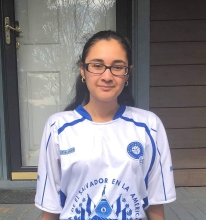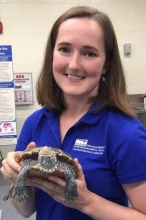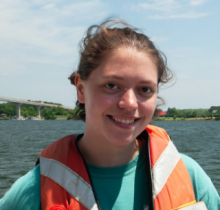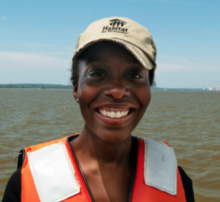Eight students will be presenting the summer work at the Ocean Sciences Meeting in March 2022!
Kelley M. Parker, Texas A&M University, Galveston
Class Year:
1991Mentor:
Michael Roman, Ph.D.Project Title:
Comparative analysis of the effects of hypoxia on the life stages of Acartia tonsa and Oithona calcava
Abstract:
Increases in hypoxia and anoxia conditions occur throughout Chesapeake Bay during the summer. Copepods may be able to avoid these conditions by concentrating at the surface. However, their eggs sink into deeper, more anoxia water. The lower oxygen may affect the viability of the eggs and/or the nauplii hatching from them. I plan to investigate the effects of low dissolved oxygen on the egg, first naupliar, second naupliar, and adult stages of two calanoid copepods common in the Bay, Arcartia tonsa and Oithona calcava. Acartia tonsa, the most abundant copepod in the Bay, may be found in the surface waters. Oithana calcava prefer higher salinity water and thus, may be found in more hypoxia areas. First, this study will compare the differences between the life history stages within both species. Then, the comparative tolerances of the two species to low DO will be related to their distribution patterns.







































